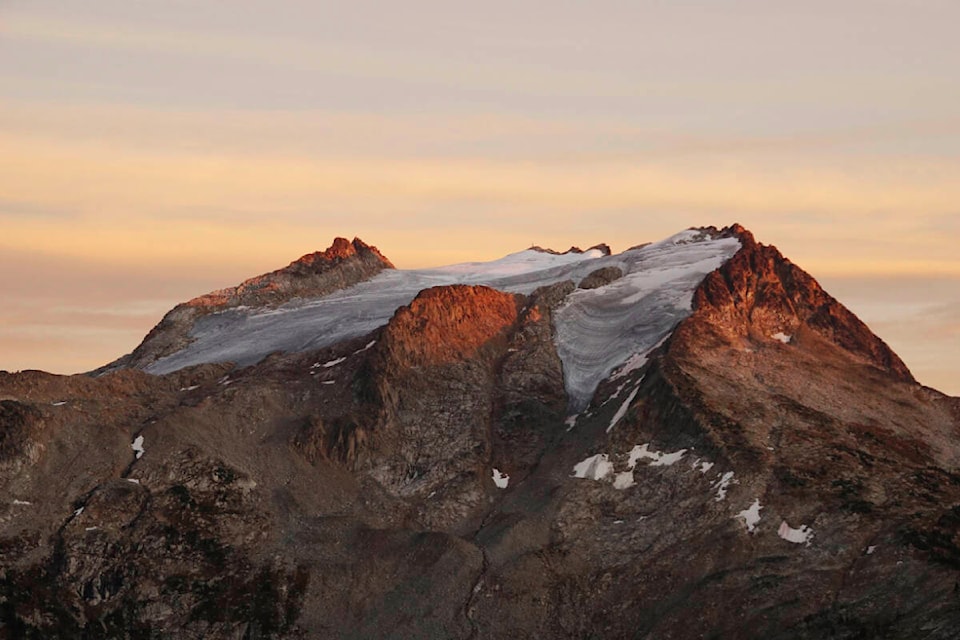It no longer looks as it once did, the field of ice dashed against a rocky sheet where Jordan Carter played as a boy.
He can recall family hikes to the mountain peak, the blue ice he walked under along the glacier’s edges, the joy of sliding down the snow on his boots. To a tourist, Kokanee Glacier might appear the same today as in decades past, but Jordan knows better.
The Carter family has deep roots in Kokanee Glacier Provincial Park. Duncan Carter was a British horticulturist who searched the park for samples of alpine plants in the 1930s. His son John Carter was the park’s first stationed ranger in the 1970s.
Jordan Carter, one of John’s two sons, spent his childhood summers exploring the park while his father worked. John wrote books about hiking the Kootenays, and his family tagged along to scout trails. Thanksgivings at the park were an annual family trip, and hikes to the top of the glacier were common.
Carter is 38 years old now, with two children of his own. His father died at the park in 1996 after he triggered an avalanche while skiing, but Carter continues to care deeply for the playground of his youth and still makes the same trips with his young family.
“That’s a real way I feel I can really relive my childhood. Kokanee is like our backyard.”
But that backyard is changing: One of Canada’s most iconic glaciers and a place of historical and cultural significance to the Kootenays, is rapidly melting.
Ben Pelto, a glaciologist at the University of British Columbia, has studied the province’s glaciers since 2014 and makes annual trips to Kokanee, which he says has lost approximately 16 per cent of its mass over seven years.
Extreme temperature changes have quickened its demise — the glacier shrunk by six per cent, or the equivalent of almost 2.5 metres, during the 2021 heat dome.
At its current rate of melt, Pelto estimates the glacier will be gone within 30-to-50 years. If global warming can be kept below the Paris Climate Agreement goal of 1.5 C compared to pre-industrial temperatures, Pelto thinks some snow may still gather at the glacier’s current location.
But Kokanee Glacier will disappear for good, he says.
Carter has also noticed the glacier’s increased melt. The hike to the ice used to be a relatively easy day trip for him as a child. Now Kokanee Glacier has receded too far up the mountain for his own children to reach, and he’s left to watch a key place in the Carter family’s history slowly vanish.
“That’s one thing that is going to change for my kids’ kids. Maybe they’re not going to see the actual glacier.”
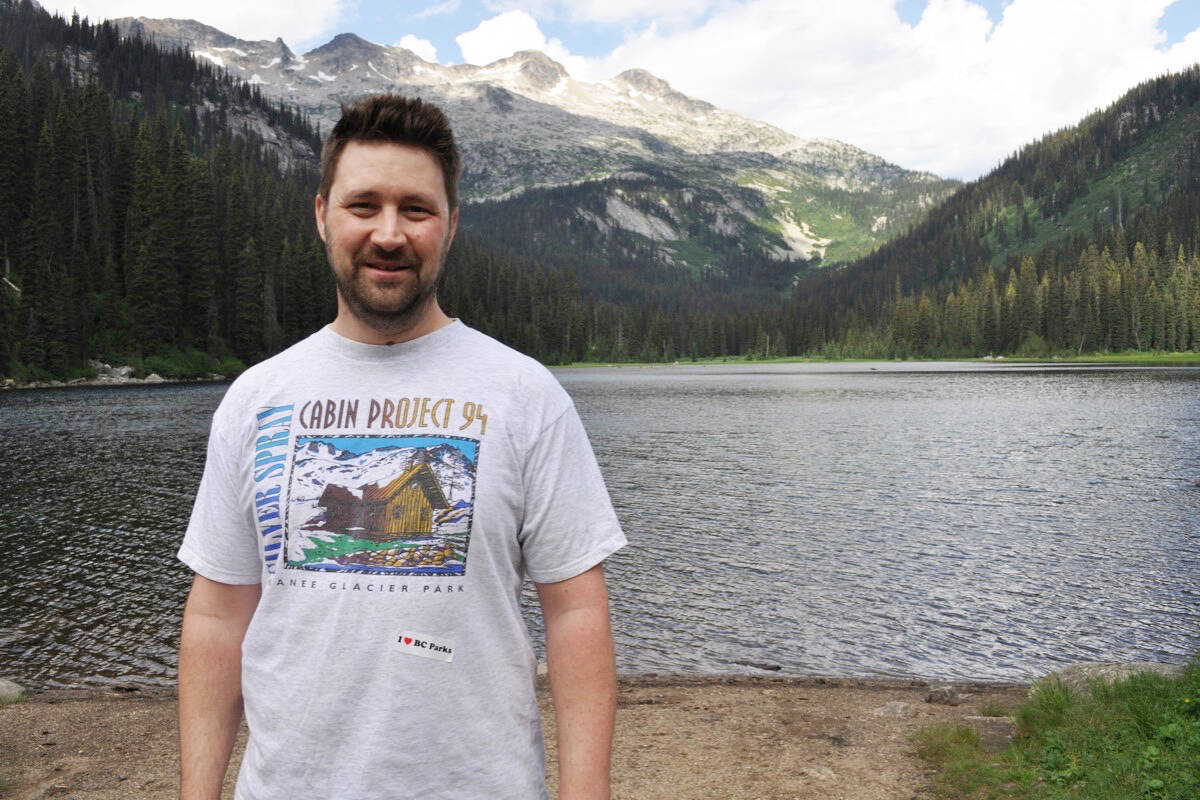
The one-two punch
Climate change is melting glaciers across the world, but the rate at which that melt is occurring in Western Canada has accelerated seven-fold in the last decade.
Brian Menounos, a geography professor at the University of Northern British Columbia and Canada research chair in Glacier Change, that used satellite imagery mapping over 14,000 glaciers in B.C. and Alberta between 1984 to 2020. The study showed gradual mass loss that suddenly hastened in 2011.
Part of this can be blamed on an increase in wildfires that cover glaciers in ash, he says. The darkened surface amplifies the energy generated by sunlight. That melts off the protective layer of snow the glacier had collected on its surface during cooler months and then attacks the glacier’s mass.
Wildfires aren’t the only way glacial surfaces darken. Snow becomes coarser and wetter as temperatures rise, which increases energy absorption. Algae, which looks reddish in colour, also grows on snow and leads to accelerated melt.
Menounos says the polar jet stream, which delivers precipitation above B.C., also migrated south in 2010 and 2011. That has led to less rain and, at higher elevations where glaciers exist, snow.
“You put all this together, and you get a one-two punch.”
Vancouver Island’s glaciers are melting faster than anywhere else, but Menounos says in the Southern Interior Region, 80 per cent of glaciers will be lost by the end of the century.
“We’ve really sped up the geologic time machine, and we are witnessing wholescale deglaciation of our mountains. We don’t really have a great analogy for that right now.”
Pelto returned to Kokanee Glacier in August. At the terminus – or toe – of the glacier, where the ice recedes into the rock, Pelto measured 125 centimetres of melt. That should be a positive following 2021 when five metres melted off the toe.
But the melt season, which used to end in mid-September upon snow fall, is now not until mid-October.
For the glacier to gain mass, Pelto says Kokanee needs about 60 per cent of its surface covered in snow. The snow cover on Aug. 31 was just 36 per cent. On the last snow-free day of the melt season, on Oct. 19, it was only nine per cent.
There have been stronger years with more snowfall, allowing the Kokanee to see 10-30 centimetres, but Pelto says on average it is losing 50 centimetres to a metre of thickness annually.
“You think about it in terms of like a bank account. You put away $100 this year, but if you go into debt a few $1,000 the next year, it doesn’t really end up mattering.”
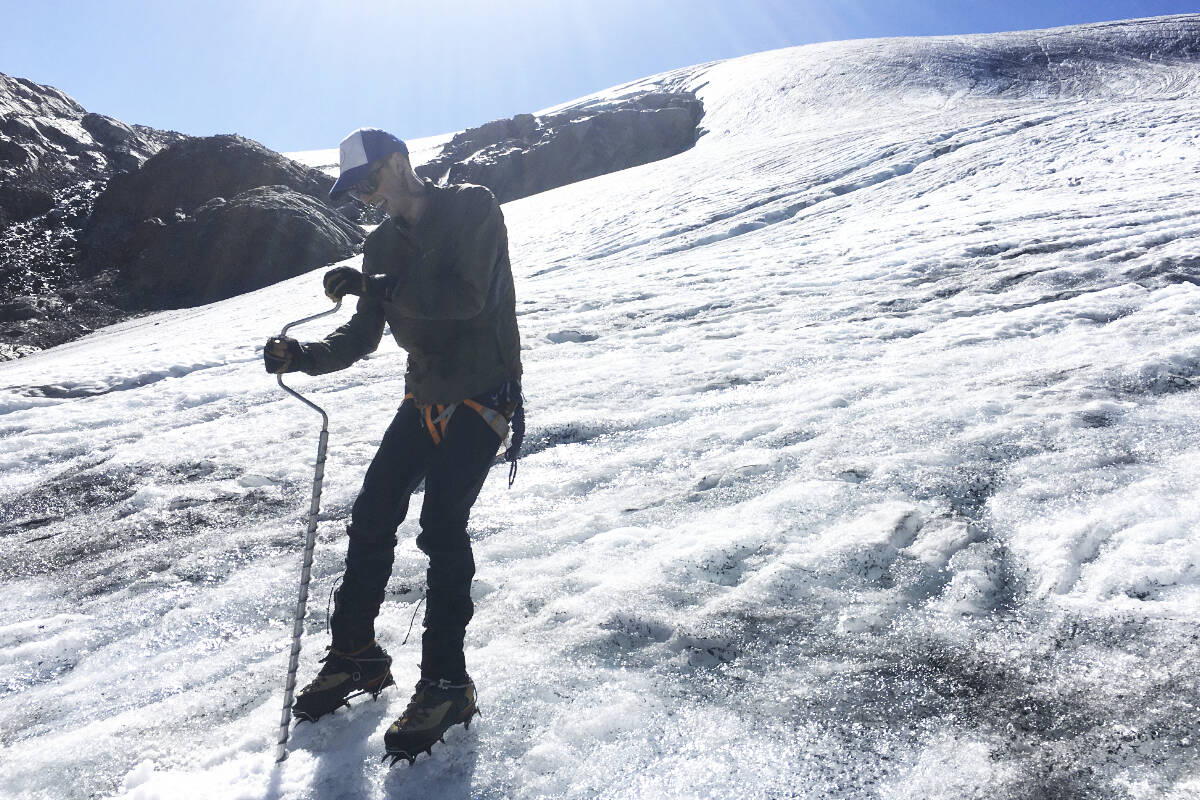
100 years of history
One trip to Kokanee Glacier Provincial Park set the direction of Dave Heagy’s life.
Heagy was in high school when he first hiked the park. He spent the night at the Slocan Chief Cabin, and was so inspired by a meeting with a ranger that he started work with BC Parks in 1978.
Two years later he was transferred to Kokanee, and ended up spending more than half his career associated with the park as either a ranger or supervisor.
“It’s kind of an iconic park, the type of park that we think about when we think about a wilderness backcountry park,” says Heagy, who still works for BC Parks as an area supervisor based out of nearby Nelson.
The park was established in 1922 on land that once was the site of gold and silver ore mining. In 1897, a newspaper first described the glacier as Kokanee, which is derived from the Colville-Okanagan Salish word ��ə����龱ʔ for kokanee salmon, and the name stuck. When the park opened to the public, the Nelson Daily �������� described it as the “Switzerland of North America.”
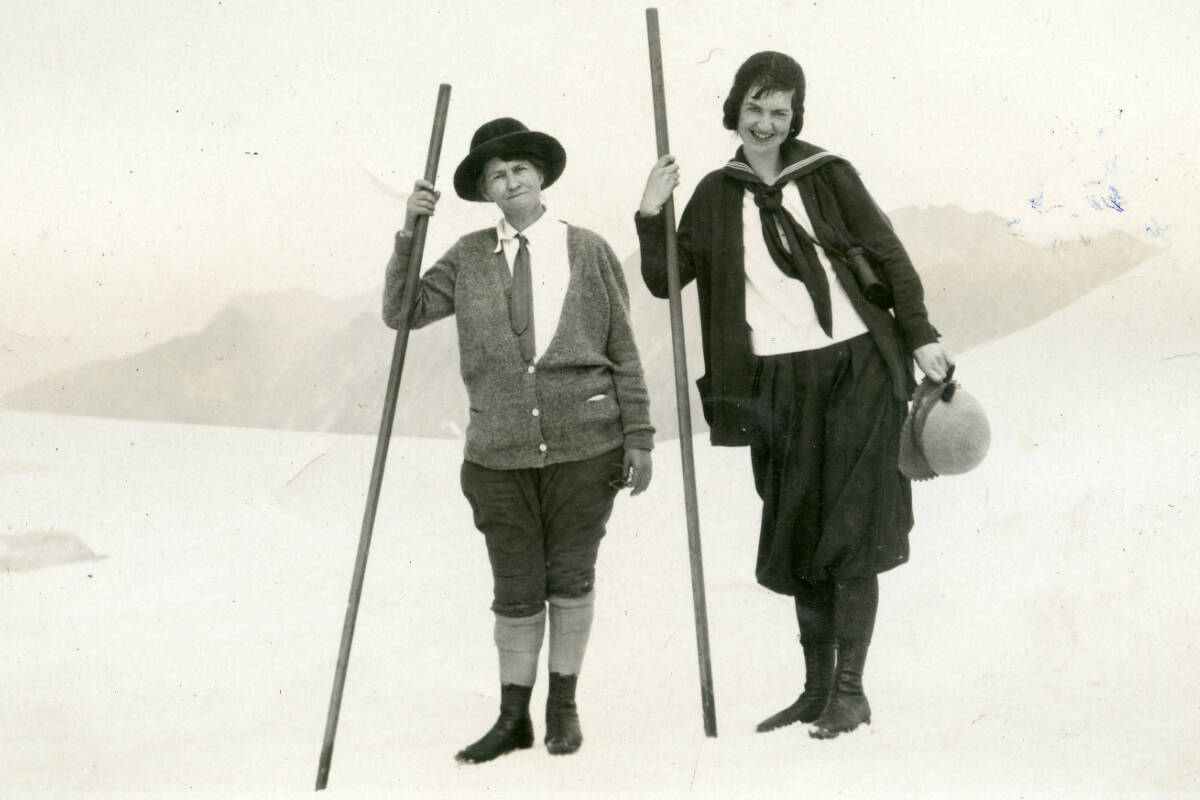
Kokanee Glacier isn’t the biggest of its kind in B.C. — at just 1.7 square kilometres it is a flake of snow compared to the 470-square-kilometre Klinaklini Glacier — but it is arguably the most well-known.
It’s the namesake of Kokanee beer, which features the glacier on its label. Nancy Greene Raine and Canada’s national ski team previously used the glacier for summer training in the 1960s. The park is also where, in 1998, an avalanche killed Prime Minister Justin Trudeau’s younger brother Michel.
In the West Kootenay, the image of the Kokanee Glacier is common in photos and art. No study to determine the park’s economic impact on the region has ever been undertaken, but its tourism draw remains strong. One tourist even became a part-time resident.
Petra Hekkenberg, a public space design artist, first came to Canada from The Netherlands in 2015. She was seeking wilderness and found it at Kokanee Glacier Provincial Park during a 2016 solo hike.
In 2021, Hekkenberg took a seasonal job as a custodian at Kokanee Glacier Cabin and passed the time sketching detailed pen illustrations.
“It’s really hard to express your love for the mountains, because you can’t give them a hug, and they won’t give you a hug back,” she says. “I wanted to share it even just with myself, and memorize it, and grasp those moments.
This year, Hekkenberg released a book of her illustrations and notes, as well as a on the mountain. She’s found peace at the park, but struggles to reconcile with the ways climate change is impacting it.
“We really love the beauty obviously that is around us, and we want to hold on to that the way we know it. But we can’t.”
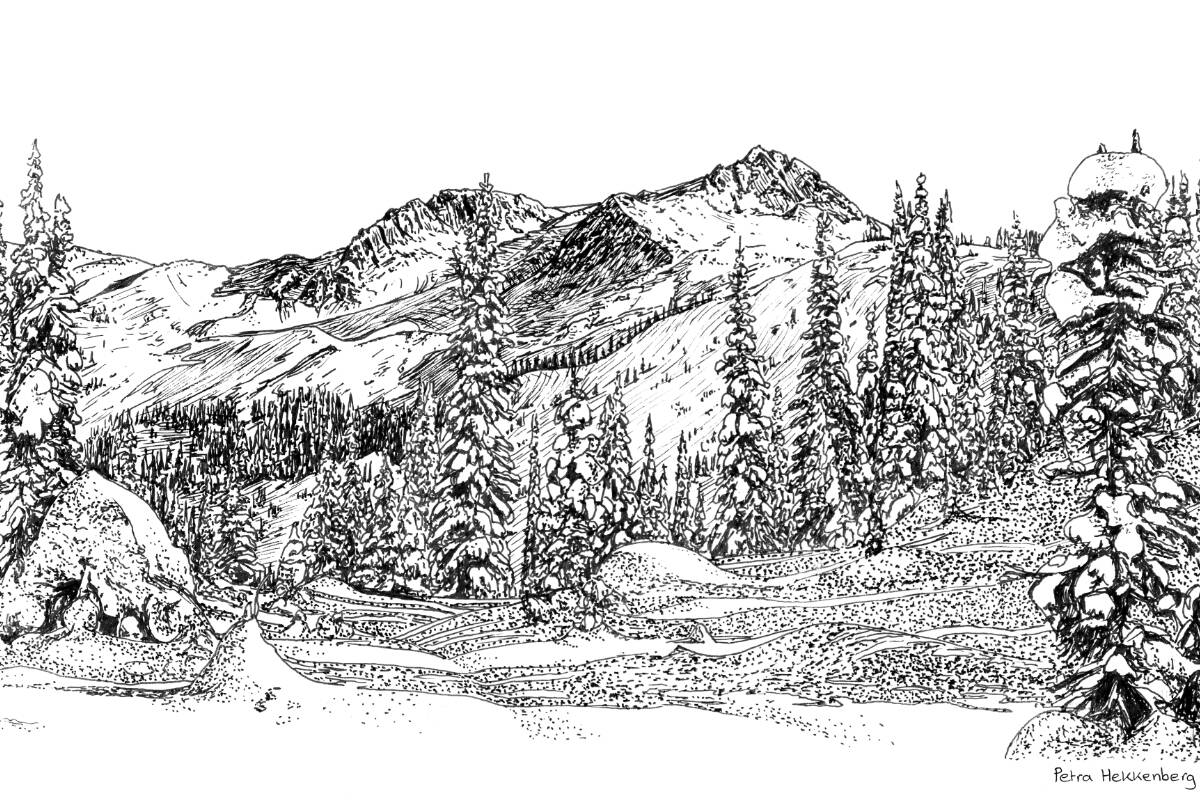
A future without Kokanee Glacier
What will happen when the glacier is gone?
Living Lakes Canada’s program manager Heather Shaw began a monitoring project this year at Kokanee Glacier Provincial Park that studies how water bodies at high elevations respond to climate change. The glacier’s melt feeds into nearby Joker Lakes, which in turn runs downstream into several creeks that end up in Kootenay Lake.
The amount of glacier water matters during drought months. That’s when streams and larger bodies like Kootenay Lake, which is used to power four hydroelectric dams and increasingly fight wildfires, rely on glacier melt.
“Glaciers are big storage,” says Shaw. “So without that storage, they aren’t replenishing or refilling the lakes.”
Less melt water and rising temperatures will also harm local wildlife.
One sign of a stream’s health is its population of macroinvertebrates such as mayflies and mosquitos. As global temperatures rise and streams evaporate, insects at lower elevations migrate higher while other bugs that have adapted to cooler alpine habitats die off. That, Shaw says, will diminish the food source for fish and birds.
The geology is also changing closer to the Kokanee Glacier.
Shaw has noted a small pool of water growing at the toe of the glacier, which she believes has only been there for 10-to-20 years. New rock formations are also appearing where the glacier has melted away in places Shaw says lakes will form.
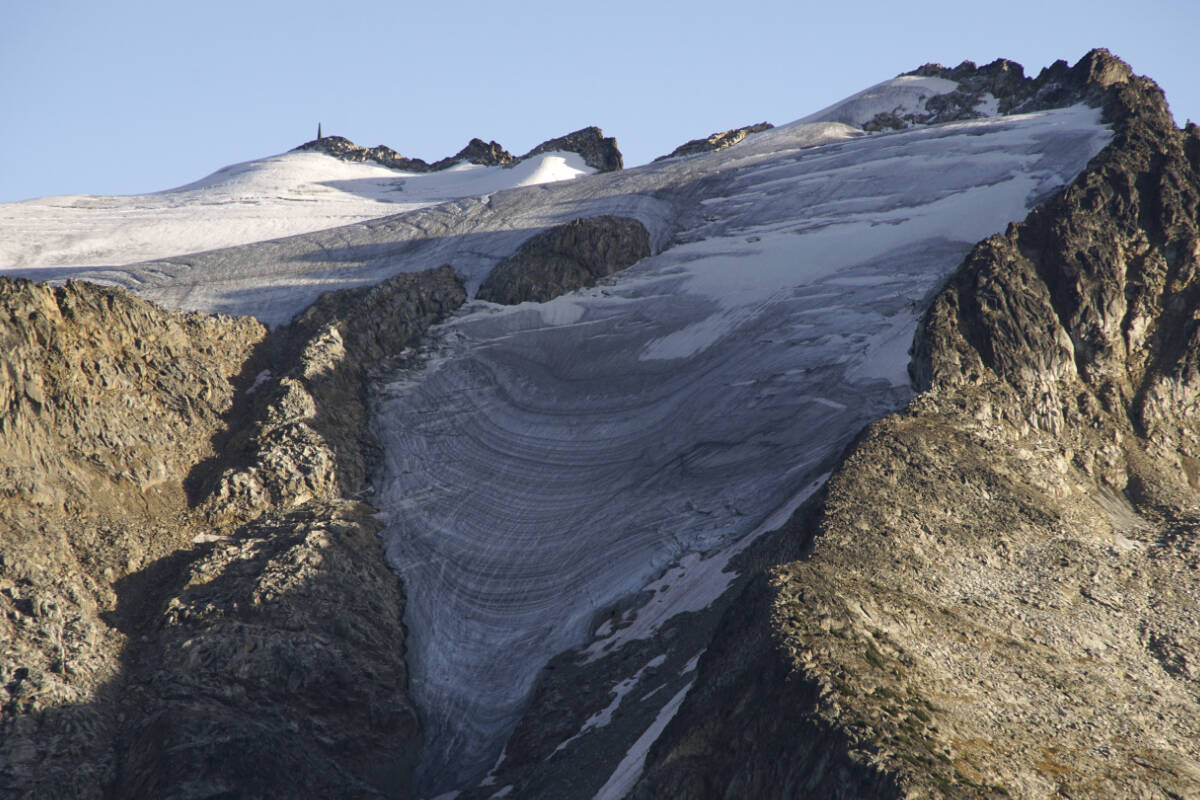
But Kokanee Glacier’s melt is only a drop of water compared to the impact of melting glaciers across the globe.
This month, a report by the United Nations Educational, Scientific and Cultural Organization found . In 2019, the U.N.’s Intergovernmental Panel on Climate Change predicted sea levels will likely by the end of the century. That could, yet another study suggests, .
Within a lifetime, Kokanee Glacier will be gone. But no matter how important it has been to his family, Jordan Carter is more concerned about a future without any glaciers at all.
“I really think it’s more about the bigger picture. That’s the water that’s filling our lakes and streams. What’s that going to look like without that?”
No one really knows the answer, and the time to find out is melting away by the day.
READ MORE:
•
•
•
| tyler.harper@nelsonstar.com
Like us on and follow us on .
